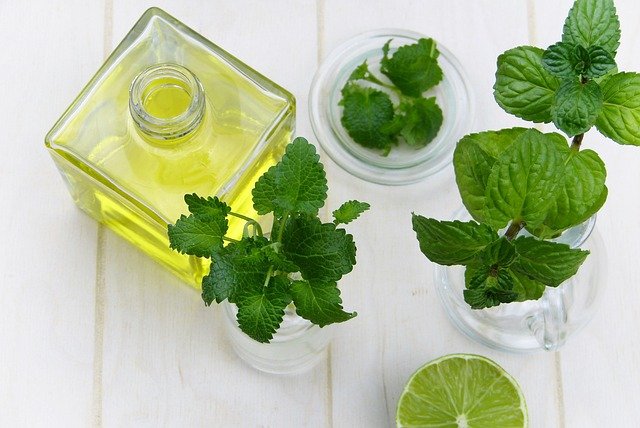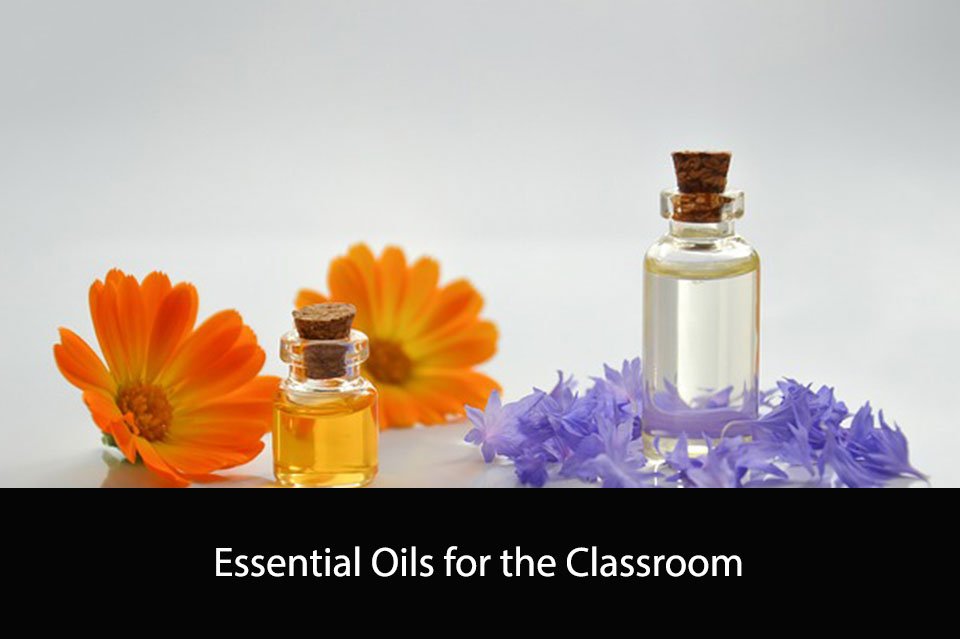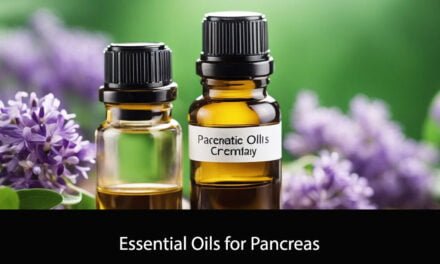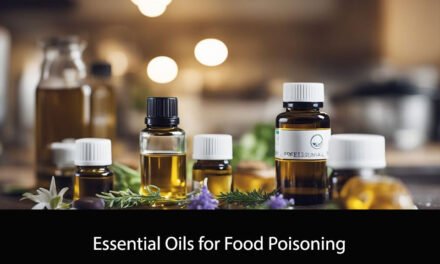Essential oils have been used for centuries to promote health and well-being. Recently, they have gained popularity in the classroom as a natural way to improve focus, reduce stress, and create a more positive learning environment. Essential oils are highly concentrated plant extracts that can be diffused into the air, applied topically, or ingested in small amounts.
When used correctly, essential oils can have a powerful impact on the body and mind. For example, peppermint oil has been shown to increase alertness and cognitive performance, while lavender oil can promote relaxation and reduce anxiety. Other popular oils for the classroom include lemon, which can help improve mood and energy levels, and frankincense, which can enhance focus and concentration.
It’s important to note that essential oils should be used with caution, especially around children. Some oils can cause skin irritation or allergic reactions, and others should not be ingested. It’s also important to use high-quality oils from a reputable source to ensure purity and potency. With proper use and precautions, however, essential oils can be a valuable tool for teachers and students alike.

Understanding Essential Oils
What are Essential Oils
Essential oils are natural aromatic compounds extracted from plants. They are highly concentrated and contain the essence of the plant’s fragrance and healing properties. Essential oils are known for their therapeutic benefits and have been used for centuries to promote health and well-being.
There are various methods of extracting essential oils, including steam distillation, cold pressing, and solvent extraction. Each method produces a different quality of oil, and some are more expensive than others.
Essential oils are used for a wide range of purposes, including aromatherapy, massage, and topical applications. They can also be used in cleaning products and as natural remedies for common ailments.
Why Use Essential Oils in the Classroom
Using essential oils in the classroom can have many benefits for students and teachers alike. Essential oils can help create a calm and relaxing atmosphere, which can improve focus and concentration. They can also help to reduce stress and anxiety, which can be particularly helpful during exams or other stressful situations.
Essential oils can also be used to promote a positive mood and uplift spirits. This can be especially helpful for students who may be struggling with difficult emotions or feelings of sadness or depression.
In addition, essential oils can be used to support the immune system and promote overall health and wellness. This can be particularly important during cold and flu season, when many students may be at risk of getting sick.
Overall, using essential oils in the classroom can be a natural and effective way to support the health and well-being of students and teachers alike.
Selecting Essential Oils for the Classroom
When selecting essential oils for the classroom, it is important to consider the needs of the students and the desired outcome. Here are some essential oils that are commonly used in classrooms and their benefits.
Lavender
Lavender essential oil is known for its calming and relaxing properties. It can help reduce stress and anxiety, which can be especially helpful during test-taking or when students are feeling overwhelmed. Lavender can also improve sleep quality, making it a great option for nap time or for students who have trouble sleeping.
Peppermint
Peppermint essential oil is invigorating and can help improve focus and concentration. It can also help reduce feelings of nausea and headaches, making it a good choice for students who experience these symptoms. Peppermint can be diffused or applied topically for best results.
Eucalyptus
Eucalyptus essential oil has a refreshing and uplifting scent. It can help improve respiratory function and can be especially helpful during cold and flu season. Eucalyptus can also help improve mental clarity and focus, making it a great option for studying and test-taking.
Lemon
Lemon essential oil has a bright and energizing scent. It can help improve mood and reduce feelings of stress and anxiety. Lemon can also help improve focus and concentration, making it a great choice for students who need a little extra help staying on task.
When selecting essential oils for the classroom, it is important to choose high-quality oils from a reputable source. It is also important to follow proper dilution guidelines and to avoid using oils that may be irritating or sensitizing to some students. By selecting the right essential oils, we can create a positive and supportive learning environment for our students.
Benefits of Essential Oils in the Classroom
Essential oils are a natural and effective way to improve the learning environment in the classroom. By using essential oils, we can create a calming and stimulating atmosphere that promotes concentration, boosts immunity, and reduces stress.
Improving Concentration
Certain essential oils, such as rosemary and peppermint, have been shown to improve cognitive function and memory retention. Diffusing these oils in the classroom can help students stay alert and focused during class. Additionally, the scent of essential oils can help stimulate the brain and increase mental clarity.
Boosting Immunity
Essential oils, such as tea tree and eucalyptus, have natural antimicrobial properties that can help prevent the spread of germs in the classroom. By diffusing these oils, we can create a healthier environment for students and reduce the risk of illness.
Reducing Stress
The use of essential oils, such as lavender and chamomile, can help reduce stress and anxiety in the classroom. Diffusing these oils can create a calming and relaxing atmosphere that promotes emotional well-being. Additionally, the scent of essential oils can help improve mood and reduce feelings of tension.
In conclusion, the use of essential oils in the classroom can provide numerous benefits for students and teachers alike. By incorporating essential oils into the learning environment, we can create a more productive, healthy, and enjoyable atmosphere for everyone.

How to Use Essential Oils in the Classroom
Diffusion
We can use essential oils in the classroom by diffusing them. Diffusion is an effective way to disperse essential oils into the air. It provides a gentle and continuous aroma that can help create a calming and inviting atmosphere in the classroom.
To diffuse essential oils, we can use an essential oil diffuser. There are many types of diffusers available, including ultrasonic, nebulizing, and heat diffusers. Ultrasonic diffusers are the most common type of diffuser used in classrooms. They work by using water to disperse the essential oils into the air.
When using a diffuser in the classroom, it is important to choose essential oils that are safe for children. Some safe essential oils for children include lavender, lemon, peppermint, and frankincense.
Spray Bottles
Another way to use essential oils in the classroom is by creating a spray bottle. Spray bottles are an easy and convenient way to use essential oils. They can be used to freshen the air, clean surfaces, and create a calming atmosphere.
To create a spray bottle, we can mix essential oils with water and a small amount of alcohol or witch hazel. We can then spray the mixture around the classroom as needed.
When using a spray bottle, it is important to test the mixture on a small area first to ensure that it does not damage any surfaces. It is also important to choose essential oils that are safe for children.
Personal Inhalers
Personal inhalers are another way to use essential oils in the classroom. They are small and portable, which makes them ideal for children to use throughout the day. Personal inhalers can be used to promote focus, calmness, and relaxation.
To create a personal inhaler, we can add a few drops of essential oils to a cotton wick and insert it into the inhaler. The inhaler can then be used as needed throughout the day.
When creating a personal inhaler, it is important to choose essential oils that are safe for children. It is also important to label the inhaler with the child’s name to prevent any mix-ups.
Overall, essential oils can be a great addition to the classroom. They can help create a calming and inviting atmosphere, promote focus and concentration, and provide a natural alternative to synthetic fragrances.
Safety Precautions for Using Essential Oils
When using essential oils in the classroom, it is important to take certain safety precautions to ensure the well-being of all students and staff. Here are some guidelines to follow:
Dilution
Essential oils are highly concentrated and should never be used undiluted on the skin or ingested. We recommend diluting essential oils with a carrier oil such as coconut or jojoba oil before applying to the skin. The recommended dilution ratio is 1-2 drops of essential oil per teaspoon of carrier oil.
Allergies
Some individuals may have allergies or sensitivities to certain essential oils. It is important to be aware of any allergies or sensitivities among students and staff before using essential oils in the classroom. We recommend conducting a patch test on a small area of skin before using any new essential oils.
Inhalation
Essential oils can be diffused in the air to provide aromatherapy benefits. However, it is important to use a high-quality diffuser and to follow the manufacturer’s instructions. We recommend diffusing essential oils for no more than 30 minutes at a time and taking breaks in between.
Storage
Essential oils should be stored in a cool, dry place away from direct sunlight. We recommend keeping essential oils out of reach of children and labeling them clearly to avoid confusion.
By following these safety precautions, we can enjoy the benefits of essential oils in the classroom while ensuring the safety and well-being of all students and staff.
Conclusion
In conclusion, essential oils can be a great addition to the classroom environment. They can help promote a sense of calm and relaxation, as well as improve focus and concentration. However, it is important to use them safely and responsibly.
When using essential oils in the classroom, it is important to consider the preferences and sensitivities of all students and staff. Some individuals may have allergies or sensitivities to certain oils, so it is best to use them in a well-ventilated area and to avoid applying them directly to the skin.
It is also important to use high-quality, pure essential oils to ensure their effectiveness and safety. Look for oils that are labeled as 100% pure and therapeutic grade, and avoid oils that contain synthetic fragrances or additives.
Overall, essential oils can be a great tool for creating a positive and productive classroom environment. By using them responsibly and with consideration for all individuals, we can reap their benefits and enhance the learning experience for everyone involved.

Frequently Asked Questions
What are some essential oils that can be used to promote focus and concentration in the classroom?
Some essential oils that can be used to promote focus and concentration in the classroom include peppermint, rosemary, lemon, and eucalyptus. These oils can be diffused or applied topically to help students stay alert and focused during class.
How can essential oils be safely diffused in a classroom setting?
Essential oils can be safely diffused in a classroom setting by using a high-quality diffuser that is specifically designed for essential oils. It is important to follow the manufacturer’s instructions and to use only a small amount of oil at a time. It is also important to ensure that the diffuser is placed in a safe location and is not accessible to children.
Are there any essential oils that should be avoided in a classroom environment?
Some essential oils should be avoided in a classroom environment, including oils that are known to be irritating or sensitizing to the skin, such as cinnamon, clove, and oregano. It is also important to avoid oils that have a strong scent, as this can be overwhelming for some students.
Can essential oils be used as a natural alternative to chemical cleaners in the classroom?
Essential oils can be used as a natural alternative to chemical cleaners in the classroom. For example, tea tree oil can be added to a spray bottle of water to create a natural disinfectant. However, it is important to note that essential oils should not be used as a replacement for proper cleaning and sanitation practices.
What are some best practices for using essential oils in a classroom with children?
Some best practices for using essential oils in a classroom with children include using only high-quality oils, diluting oils properly before use, and avoiding oils that are known to be irritating or sensitizing to the skin. It is also important to ensure that the diffuser is placed in a safe location and is not accessible to children.
Are there any studies or research supporting the use of essential oils in the classroom?
While there is limited research on the use of essential oils in the classroom, some studies have suggested that certain oils may have a positive effect on cognitive function and mood. However, more research is needed to fully understand the potential benefits and risks of using essential oils in the classroom.





